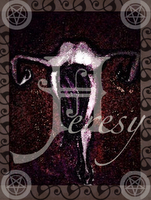No longer just girls in trouble


February 1, 2006
"No longer just girls in trouble"
Abortion Trends in the Philippines: 2005
A new study on the incidence of clandestine abortion in the Philippines (the Catholic capital of Southeast Asia) is likely to
challenge common views about why women resort to abortion where it is illegal in the first place.
The Allan Gutmacher Institute (AGI), a well known research organization collaborated with the local University of the Philippines Population Institute (UPPI) in 1994 and already pegged abortion incidence to 25 per 1,000 women per year (around 400,000 annually).
This year, the Allan Guttmacher Institute will release its complete
findings in April showing that in 2000 that the incidence is the
higher level of 473,400 annually (27 per 1,000 women).
One of the more interesting findings is how the "stereotype" of who
undergoes abortion and why doesn't match the hard data.
"Our laws portray the stereotype of young women as the primary seekers
of abortion. In fact the law imposes a different and lower set of
penalties when young women (their parents included) commit abortion
because they want to conceal dishonor," notes Atty. Carolina S.
Ruiz-Austria, Senior Lecturer of the UP College of Law and member of
the Reproductive Health Advocacy Network (RHAN)
The typically thought of scenario as young girls in trouble seeking
abortions for having engaged in sex society disapproves of still
likely accounts for some of the national figures on abortion (the
study noted over 46% of attempted abortions are still among young
women- 24 and below) the majority of women actually having abortions
are actually Catholic mothers with three or more children, married
and/or living in with a partner.
The study notes that the actual profile of the women who undergo
abortion does not match the popular stereotype of the "young girl in
trouble:"
• Nine in 10 are married or in a consensual union.
• Half reside in an urban setting.
• More than half have at least three children already.
• The vast majority are Catholic.
Futhermore, while the study also showed that majority have had either
a highschool or college level education (7 out of 10), majority are
also poor (also 7 out of 10)*
"Given the high rates of unmet need, that is Filipino women wanting to
space births or have less children is at 45%, this trend is not
surprising but it is also very alarming," noted Atty. Rhodora Roy
Raterta, Secretary General of the Reproductive Health Advocacy Network
and Executive Director of Family Planning Organization of the
Philippines.
In 2003, the National Health Demographic Survey (NDHS) pegged unmet
need at 45 % among women who said they did not want a child in the
next two years, or wanted no more children and were able to become
pregnant, but were either using no contraceptive method at all for
were using a traditional method.
Coupled with the current administration's single-mindedness to impose
an exclusively Natural Family Planning (NFP) program in conformity
with the Catholic hierarchy's demands and the final stages of the
USAID phase out of support for modern contraceptives by 2007, the
Reproductive Health Advocacy Network (RHAN) says that the new data
should sound the alarm for policy makers to prioritize holistic
reproductive health services.
In a statement, the RHAN emphasized that the best means to prevent
abortion is to inform, empower women as well as give them access to
the reproductive health services they need:
"Given little and fast disappearing choices, it is disturbing to see
that Filipino women are desperately resorting to clandestine abortion
as a family planning method even when there are safe and effective
means to prevent unplanned pregnancy available today."
Reproductive Health Advocacy Network (RHAN) (karolzki@gmail.com)
* A Wealth Index is constructed based on women's possession of certain
amenities (electricity, radio, television, gas range/LPG gas/electric
stove, refrigerator, electric fan, air conditioner, washing machine,
toilet inside household, tap drinking water inside household, cellular
phone, telephone, have a household helper/maid, bicycle and car).
Respondents who had a certain number of amenities were classified as
better off or nonpoor. Women with few or no amenities were classified
as poor





0 Comments:
Post a Comment
<< Home